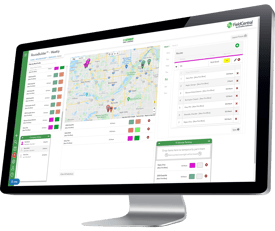
By Taylor Tuomie
Introduction
Each year, HindSite surveys hundreds of green industry professionals and we ask questions about virtually every facet of their business. From hiring, to profit growth, to sales and marketing - we try and cover it all. It gives us and the industry as a whole a better idea of how businesses are faring.
This year, there were a lot of positive trends that we saw within the green industry. For instance, most businesses expect to increase their hiring and also plan on spending more on new equipment and software, which indicates that they are growing.
So we wanted to share a few key learnings in a blog post series. We are going to go in depth on topics like hiring and training, goal setting and growth, and services and profit. Without further ado, part one of three in our blog series.
Part 1 - Hiring and Training
Is it getting harder to find good employees?
“79% of green industry businesses surveyed said it’s somewhat or very difficult to find good employees, while only 21% said it was somewhat or very easy to find employees. ”
A majority of green industry businesses rely heavily on word of mouth referrals from their employees. This can be a good method to finding employees, however there is a limited supply of candidates in this pool of people. If you're a growing business, you'll likely exhaust this option quickly.
The size of your business might also have a factor. Our report shows that smaller businesses have an easier time finding employees. This might be because larger businesses are hiring for multiple positions at one time. Onboarding one employee is a whole lot easier than a few at a time.
How to find employees for your green industry business?
We’ve written a few blog posts on this topic in the past, but it looks like the data is holding true to what we had written in the past! Companies that rely solely on word of mouth for job candidates have a tougher time finding employees. The green industry businesses that look towards other outlets have a much easier time hiring.
The 8% that say they have a very easy time of finding good employees are talking to their local schools. High schools, trade schools and colleges can be a great source for candidates. While they’re likely only going to be able to work seasonally, that is perfectly fine for most green industry businesses, who normally have a “busy season” and only keep on 1 or 2 salaried employees.
Importance of training for growth
“Green industry businesses are, on the whole, very good at training their employees. Just 18% of respondents don’t have a formal, recurring training schedule for their employees.”
This is an encouraging stat. The businesses who train their employees weekly/monthly are keeping them around longer, too. Being able to reduce employee churn is extremely important since, as we have seen earlier, almost 80% of green industry employers have a tough time finding employees.
Training corresponds to profitability. 15% of respondents who said they don't train weren't profitable. This is compared to only 8% of those who do schedule recurring training.
Is it getting harder to keep good employees?
I was actually just discussing this with our sales rep, Gabe Seymour. He said that employers are having trouble “keeping their good employees because if another company offers them more money or better benefits, they’re going to go there. And normally the first change that they make is pay, because it's the quickest. Changing systems and operations takes time. They can offer a raise right away”. But that often isn't the only reason that employees jump ship.
Our data from the Benchmark Report shows the importance of benefits. 60% of the businesses who said it was easy to hire offer benefits.
It might be tough to swing it with a budget, but if at all possible, it should be considered. Compensation shouldn’t be thought of as just the wages you pay. Employees consider their compensation as a package. Just because you might offer less of an hourly rate than someone else, maybe you can offset that fact by offering paid time off or other benefits that make your overall compensation package more attractive.
Or, check out the Benchmark Report for yourself! Click below to download it today!








